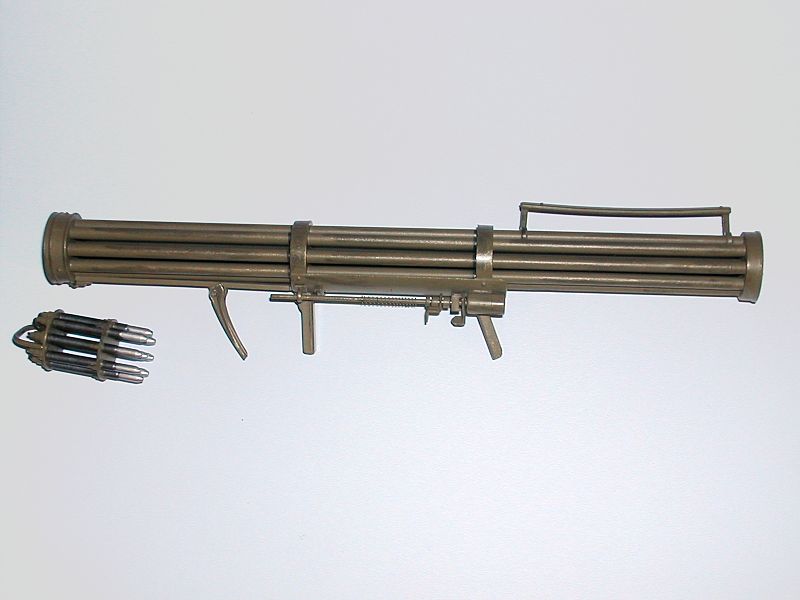
Designed by HASAG (Hugo Schneider AG) of Leipzig in 1944, the Luftfaust was produced in two different versions.
The first version, the Fliegerfaust A, had four 20 mm caliber barrels. These fired 20 mm projectiles weighting 90 g and containing 19 g of explosive, propelled by means of a small rocket.
The second version, the Fliegerfaust B ("Luftfaust") increased the length of the barrels, and added another 5 barrels, for a total of 9 barrels. The weapon had a total length of 150 cm and weighed 6.5 kg. First 4 rounds from every second barrel were fired immediately and the remaining five 0.1 second later to avoid damaging the projectiles themselves by the rockets' exhaust fumes and from interfering with their courses.
A six barrel 30 mm prototype was also constructed.
The Fliegerfaust was not a successful weapon because of its small effective range caused by too large dispersion of projectiles and the designed range of 500 meters was never attained. Although large orders for the weapon were placed in 1945, and with 10,000 launchers and 4 million rockets ordered, only 80 of these weapons were ever used in combat trials, in this case by a unit based at Saarbrücken.
Source
http://en.wikipedia.org/wiki/Fliegerfaust/Luftfaust